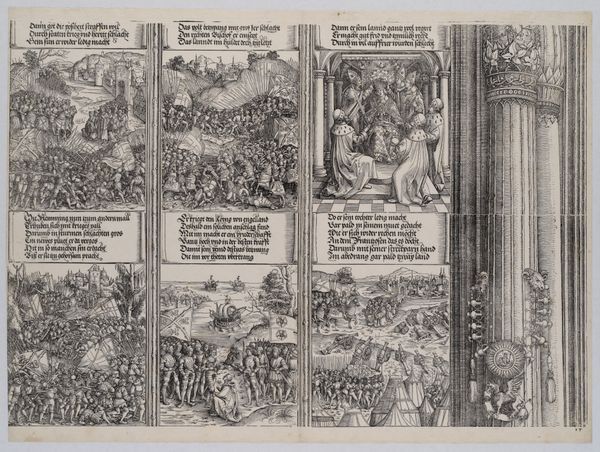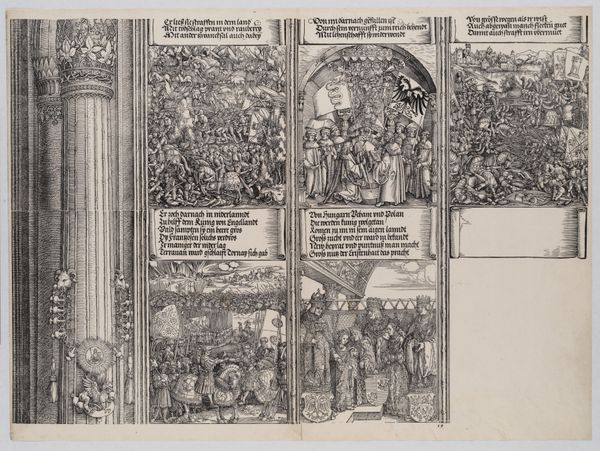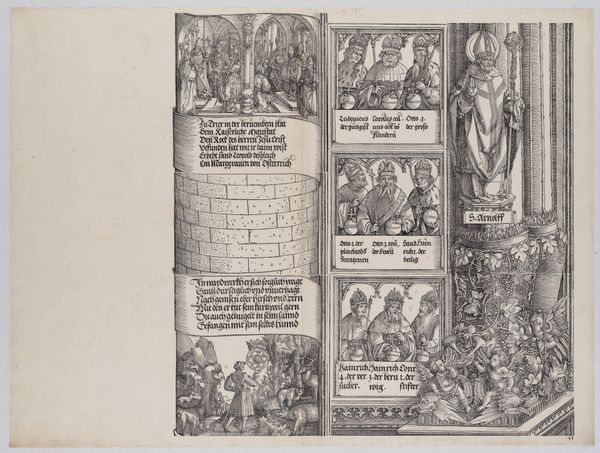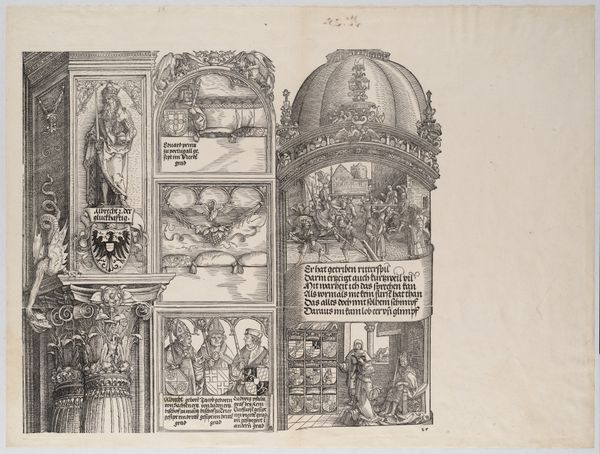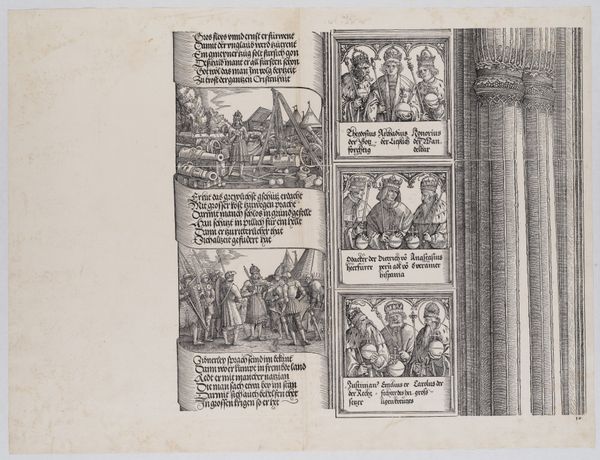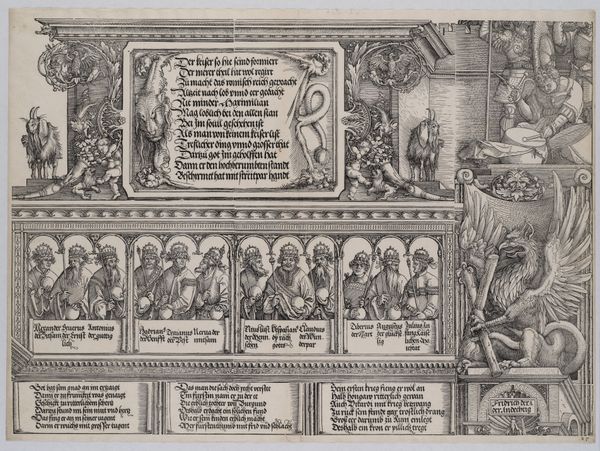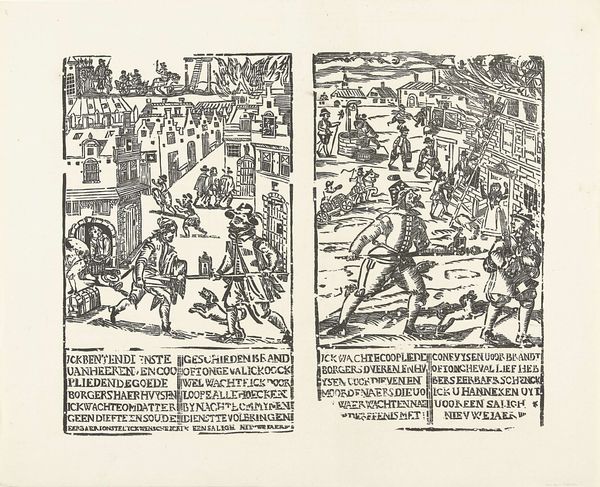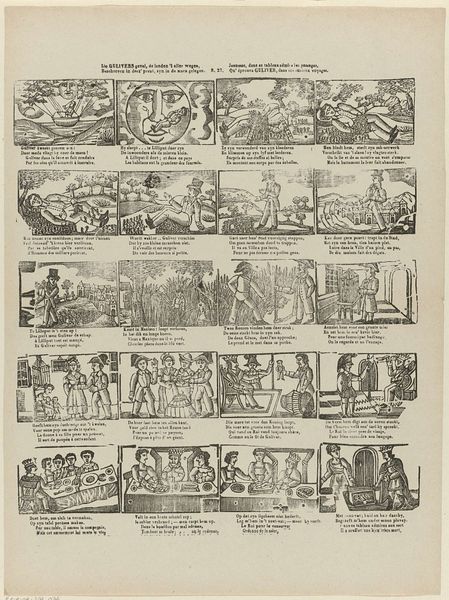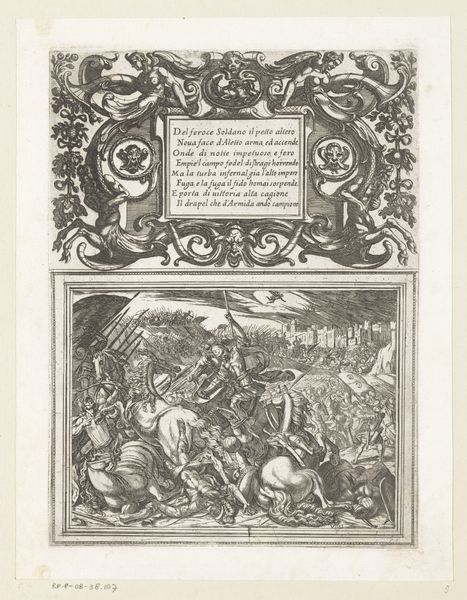
The Betrothal of Mary of Burgundy; Young Maximilian; The Struggle for the Burgundian Succession; The Battle Near Therouanne; The War in Guelderland; and The Utrecht Feud, from the Arch of Honor, proof, dated 1515, printed 1517-18 1515
0:00
0:00
drawing, print, woodcut, engraving
#
drawing
#
narrative-art
# print
#
landscape
#
figuration
#
11_renaissance
#
woodcut
#
line
#
history-painting
#
northern-renaissance
#
engraving
Dimensions: Sheet: 18 1/4 × 24 15/16 in. (46.3 × 63.3 cm)
Copyright: Public Domain
Curator: My first impression of this, I’ll be honest, is claustrophobia! Look at the busyness. It feels like a snapshot of pure, concentrated medieval life, albeit idealized and romanticized. Editor: Precisely! You’ve intuitively grasped the intensity that Albrecht Durer aimed to convey in his monumental print, "The Betrothal of Mary of Burgundy; Young Maximilian; The Struggle for the Burgundian Succession; The Battle Near Therouanne; The War in Guelderland; and The Utrecht Feud, from the Arch of Honor.” Created around 1515, then printed between 1517 and 1518, this print, now housed at the Metropolitan Museum of Art, is not just a singular image. Curator: It's like looking at six separate illustrations laid out side-by-side. Each panel seems to capture a moment in a grand story—love, war, politics, and religion all colliding together. Is that accurate, would you say? Editor: Certainly, Durer presents us with a carefully structured visual narrative that lauds Maximilian I’s dynasty while chronicling significant political and military events of his reign. Observe how the composition balances formal portraits with active battle scenes. The fine lines of the engraving create a palpable tension between the static dignity of the rulers and the dynamic chaos of warfare. Curator: The battles! I'm fixated. So many tiny figures all caught in these little dramas. It seems impossible, though. Too much information, no easy focus! Is it just a glorification of conflict? Editor: On one level, you might perceive this visual strategy of complexly detailed landscapes as a deliberate evocation of Northern Renaissance sensibilities. Yet the meticulous detailing and symbolic positioning work towards emphasizing Maximilian's strength, divine authority, and his providential destiny as Holy Roman Emperor. Note that Durer integrates inscriptions, not just to describe events, but also to shape our understanding of them. The text acts as another layer through which Durer interprets and validates Maximilian’s imperial authority. Curator: And he actually intended it to be part of some "Arch of Honor"? It seems an ambitious medium and concept for what appears like something you’d find illustrating a medieval text… almost as if Durer's saying, ‘Look, the past is alive and glorious. It's worth honoring on a grand scale!’ Editor: Quite, Durer ingeniously utilizes printmaking to amplify the commemorative intent—multiplying the emperor’s image far beyond what any painting or sculpture could accomplish. He elevates the status of printmaking itself, which historically had been seen as functional. Curator: I hadn’t considered that; Durer’s ambition really elevates our perspective on prints. It’s amazing how something so intensely detailed and visually overwhelming ultimately communicates such a singular, purposeful vision. Editor: Indeed, thinking about the print this way reframes how we look not only at Northern Renaissance art, but at the powerful intersection of art and propaganda.
Comments
No comments
Be the first to comment and join the conversation on the ultimate creative platform.
